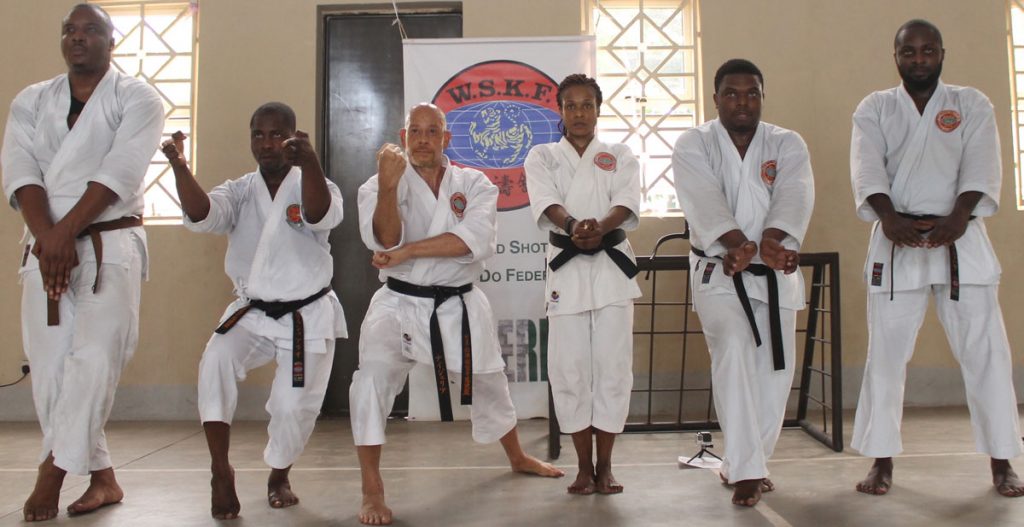A kata consist of a number of offensive and defensive techniques with each Kata more advanced than the last. These routines are a library of karate techniques. Kasuya Sensei says “that karate-ka improve their waza by practising these katas, by kata you can learn ideal balance, speed, breathing and it places great importance on the mental aspect of karate-do.”
The modern Shotokan katas were initially developed in Okinawa by the karate masters of the past. They originally came from two schools, Shorei-ryu and Shorin-ryu. Shorei-ryu was practiced by heavily built, large frame, muscular, powerful and forceful karateka, while Shorin-ryu was practiced by light, fast swift and slight karateka. These Katas were mastered by Master Ginchin Funakoshi. On introducing karate to the Japanese, he altered and integrated the katas to form the present day Shotokan karate katas. Since the formation of the J.K.A., parts of the katas have further improved as a result of studies carried out by the research section of the J.K.A.
The following are the katas practiced by the WSKF and the off springs of the JKA.
| Grade | Kata | Movements | Time |
|---|---|---|---|
| 9th Kyu | Kion | 20 | 40 seconds |
| 8th Kyu | Heian Shodan | 21 | 40 seconds |
| 7th Kyu | Heian Nidan | 26 | 40 seconds |
| 6th Kyu | Heian Sandan | 20 | 40 seconds |
| 5th Kyu | Heian Yodan | 27 | 50 seconds |
| 4th Kyu | Heian Godan | 23 | 50 seconds |
| 3rd Kyu | Tekki sho | 29 | 50 seconds |
| 2nd Kyu | Bassai dai | 42 | 60 seconds |
| 1st Kyu | Bassai dai | 42 | 60 seconds |

1st Dan Bassai dai, Kanku dai, Empi, Jion Hangestu
2nd Dan Bassai sho, Kanku sho, Nijushiho, Jitte, Tekki Nidan
3rd & Above Chinte, Sochin, Meikyo, Wankan, Unsu, Gankaku, Tekki Sandan, Gojushiho sho, Gojushiho dai
* Kata JIIN is not practiced in the WSKF
The katas above have to be mastered for grading examinations for each grade. Mastery of the kata, means the karateka knows the right sequence, each technique, its applications, the right speed and the exact timing of the kata. While performing a kata the karateka must exhibit his courtesy boldness, confidence, gentleness and humility. A kata cannot be fully mastered in a few years. A karateka must always try to improve his/her kata on every performance.
In order to obtain maximum power in offensive or defensive techniques, the karateka must tense all muscles of the entire body and grip the floor with his/her toes at the moment of impact. This is known as kime and must be done in the fastest possible time. The karateka must exhale on kime and after the completion of the technique must instantly relax the muscles of the entire body in order to perform the next technique as quickly as possible. There should be no expression or strain on the face of the karateka, while performing the kata always bear in mind your opponent.
